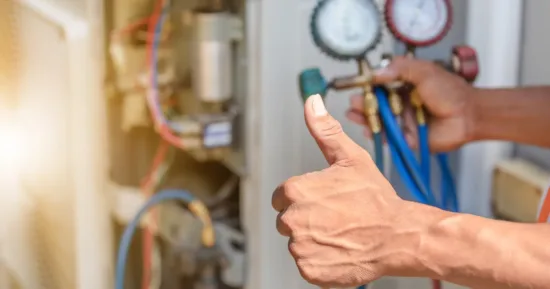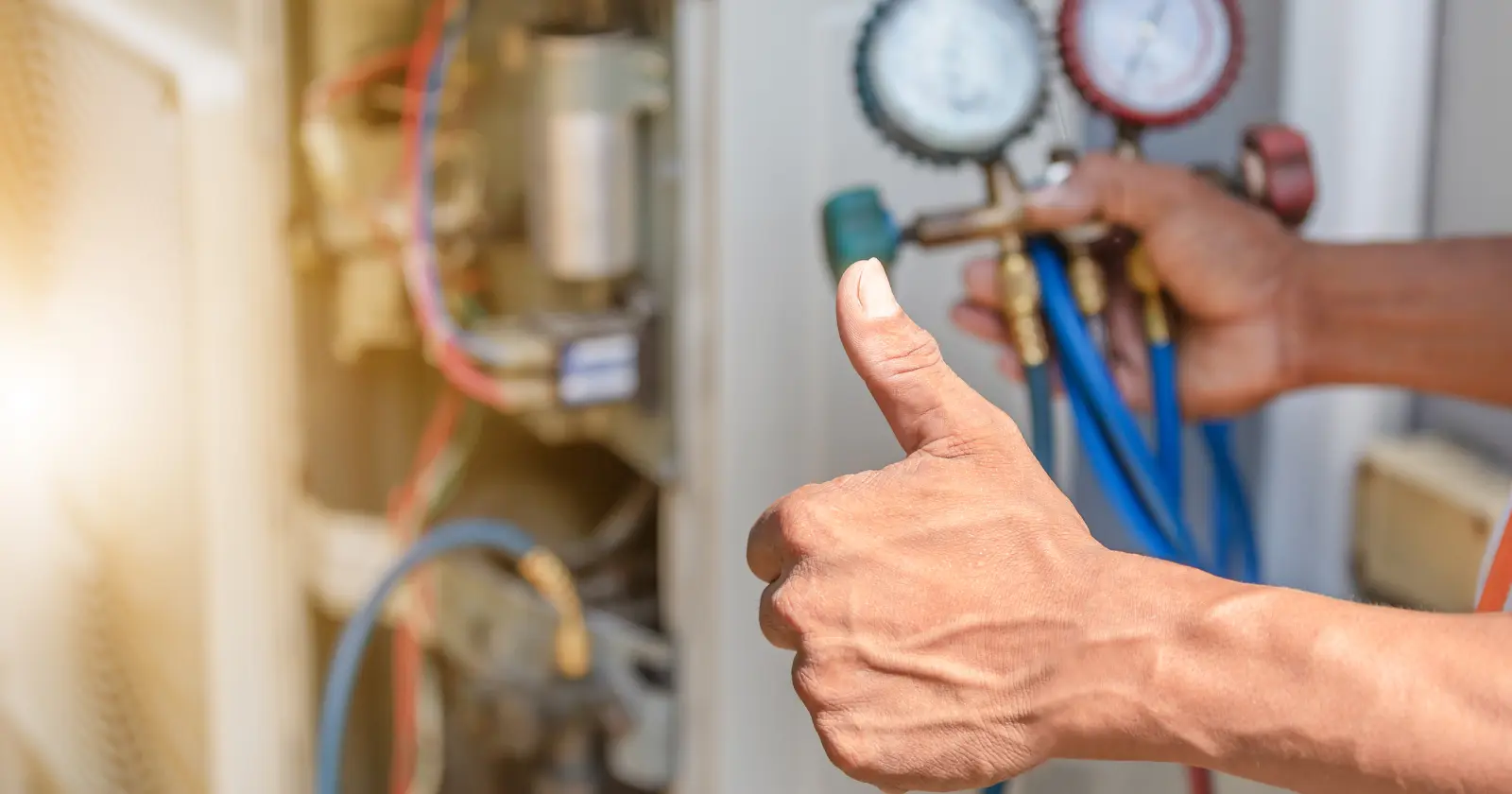
Tuning the HVAC system falls into the routine maintenance activity. Tune-ups involve inspecting, cleaning, and adjusting the components for better performance and protection from breakdowns. You can check, clean, and replace the components if needed. Moreover, testing the refrigerant level, lubricating movable parts, and tightening the loose electrical connections are part of tuning up.
Tune-ups allow the HVAC to run efficiently, provide optimum performance, and reduce undesirable occurrences like breakdowns. Normally, HVAC systems come with maintenance guides that describe how to maintain and tune up. You may sometimes tune-up once a year or twice for better performance.
Importance of Regular HVAC Tune-Ups
Regular tune-ups are essential for maintaining the health of your HVAC. Without maintenance or tune-ups, you will need air conditioner repair services frequently.
Here’s why tuning up the HVAC is essential:
● Cleaning or replacing components regularly after air conditioner installation reduces energy consumption. This, in turn, reduces energy bills.
● Problematic parts are detected and replaced in a tune-up. That’s how tune-ups extend the lifespan of HVAC systems.
● While tuning up, you are fixing small issues and may notice any sign of a big issue. So, tuning can protect you from the sudden breakdown of the whole system.
● With every part performing at its best, you get better overall performance and maintain a better indoor environment.
HVAC Tune-up Schedule: Standard for Any HVAC system
Francis Kasper, an expert technician of The Chill Brothers, and other experts suggest two tune-ups every year
It is the same for most HVAC systems. You may find some extra tune-up tips in the maintenance guides of the product.
1. During Spring or Before the Summer Season
Sprint tune-up is essential to prepare your HVAC for the summer. The cooling demand in summer is high and HVAC requires high energy too. Better preparation or a tune-up can make the system ready to provide you with comfort.
Spring Schedule
You should tune up the HVAC in early Spring. The approximate months would be March to April. Before the temperature rises and high cooling is needed, tune up the HVAC.
Tasks Needed to Perform
There are several tune-up tasks you should perform in this spring schedule. It will help you avoid frequent repairs. Always switch off the power before tuning up.
● Clean the air filters well. Make sure there is no dust or particles stuck inside. Francis Kasper suggests changing the air filters every 3 months in summer for better performance.
● Inspect the refrigerant level. Recharge refrigerants if required. You may call an HVAC professional or technician to complete this task.
● The coils of the HVAC also accumulate dust and dirt. So, clean the condenser and evaporator coils to allow them to function properly.
● Check for loose electrical connections. If there are any, tighten them with safety measures.
● Check whether the thermostat is providing accurate readings or not. Do any required adjustments in the settings.
● Some moving parts like motors, fans, etc. go through friction while operating. Lubricate these parts to reduce the level of friction and ensure smooth operation.
● Inspect the condensate drain and clean it if clogged.
● Inspect the motors and blades. If the fan blades are bent, the flow of air might be interrupted. Make sure every part is clean and healthy.
● Check for leaks in the ductwork and obstructions in the outdoor unit.
2. During Fall or Before the Winter Season
In the twice-yearly tune-up schedule, the second one is in the Fall. Fall tune-up is necessary to prepare for the winter and maintain a warm indoor environment.
Fall Schedule
Tune-up your HVAC in early Fall which is in September to October approximately. Prepare your HVAC for warming the indoor environment before the temperature drops.
Tasks Needed to Perform
Fall tune-ups also involve cleaning, checking, and replacing if needed. The essential tasks include the following:
● Air filter cleaning or changing is required like Spring tune-up.
● Inspecting and setting the thermostat for Cold winter days.
● Check if there is any crack or damage in the heat exchanger as it will transfer heat into your home. If any cracks are found, call the HVAC technicians to handle it.
● If your HVAC system has gas furnaces, clean the burner and igniter. Dirty burners or ignition systems may increase energy consumption.
● For both gas and oil heating systems, check the connections to identify any leaks. Leaky or faulty connections may lead to sudden fire breakouts. So, be cautious and change or fix the faulty connections.
● Lubricate the moving parts like the Spring tune-up schedule for smooth operations.
● Inspect the ventilation systems and remove any blockages so that gases can vent outside safely.
● Check the blower motors, humidifier, and duct sealing for efficient performance.
To ensure peak efficiency and performance, tune up the HVAC twice a year, in the Spring and Fall seasons. If your system was installed long ago and has a high use rate, you may need to tune up more than twice a year.
Expert Tips and Tricks: Do Not Overlook What Experts Suggest
There is more to HVAC tune-ups than just frequency. The Chill Brothers and other experts in HVAC systems suggest some effective tips we tend to overlook:
● Experts like Francis Kasper suggest changing the air filters every 3 months. But pay attention if you have any pets in your house as pet hairs get stuck in the air filters. In such cases, you should change the air filters more frequently – like within every month. Also, if anyone smokes inside the house or has dust allergies, they need frequent replacements of air filters.
● Upgrading your manual thermostat to a smart thermostat can make it easy to control and adjust the settings.
● Cleaning the outdoor unit for proper ventilation is needed. Experts suggest a two-foot clearance for better airflow.
● If you want to fix any small leaks in ductwork, use a mastic sealant or HVAC foil tape. It easily fixes the leak. However, larger leaks or damage require professionals to handle them.
● Many parts of advanced HVAC are self-lubricating and do not require additional lubrication. However, older models of HVAC may not have the feature of self-lubrication. If you are using an older model, lubricate the moving parts.
● If you are using the same HVAC for 10 to 15 years or more, tuning up twice a year is not sufficient. Try quarterly tuning-ups and additional maintenance to run the system well.
Try these tips for a better-performing HVAC system. Do not skip the tips while tuning up. Remember, tune-ups are not any extra work, but a part of the regular maintenance activity. After installation, tune-up twice every year, and as the system gets older or the usage increases, go for more tune-ups yearly. Take suggestions or help from experts like The Chill Brothers.

